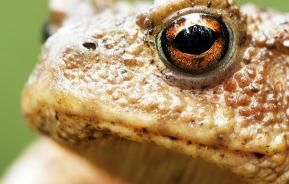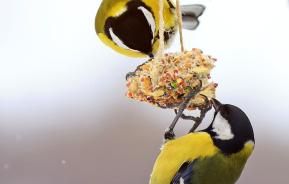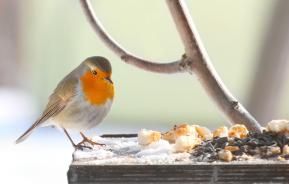During the winter months, wild animals find the home nestled in leaf piles, settle into trees, or burrow into compost heaps. With many garden animals hibernating through the winter – short food supplies and plummeting temperatures make life difficult. Some species such as birds and squirrels, do not hibernate, but struggle through the season, using up fat reserves to store heat.
Prep your garden: Create a thriving home for a diversity of species this winter
As a gardener, you can make a significant contribution to the wellbeing of wildlife today. – helping them through the winter months. Doing so can gain you access to a close range of natural wildlife, something children will especially enjoy.
Birds: Keep them warm in winter
Birds rely on birdhouses installed in gardens during the autumn and winter months, as by this time their natural diet of insects have become scarce. As birds do not hibernate it is important that they remain well-fed throughout the colder days to ensure they keep warm. To help keep birds warm throughout the icier weeks, try to keep fallen fruit undisturbed. A fantastic bird aid is a popular birdhouse. Install a house or bath in your garden and create a haven where birds may eat and drink. A birdbath also helps birds clean their feathers properly – essential for keeping insulated.
Bats: Encourage them into your garden
There are currently 17 species of bat found in Britain – however, over the last 50 years, we are seeing the population decline. Creating a bat-friendly environment at home in your garden could help keep bats flying the night sky in the numbers they should.
Bats often go unseen, unsurprising as they are active during the night whilst we are tucked up in bed. Increase food supply and provide shelter to create a bat-friendly garden. Bats prey on insects (some considered pests) such as mosquitoes, moths, and midges. Growing particular plants helps as certain flowers attract moths and other creatures (great snacks for a hungry bat).
During the day, bats hide in dark places, such as in hollow trees and under tiles. Bat boxes can be found in garden centres or made from scratch from untreated, unplanned wood – giving your garden bats a safe place to rest.
Frogs: Keep them safe during the colder months
They are a few steps you can take to ensure that your garden is a safe environment for frogs and other creatures throughout winter. Firstly, check bonfires before they are lit for animals who may be sheltering or hibernation (this also goes for hedgehogs).
It can be very helpful for wildlife if pond owners melt a hole when iced over – this enabled animals to drink from and enter the water with ease. Also, toxic gases can build up in the water of a frozen pond, which may kill any fish or frogs that are hibernating at the bottom.
Please note: do not crack the ice in an attempt to create a hole as the shockwaves can be damaging to already existing wildlife.
Additionally, take care when handling compost heaps – the warmth is often invited to frogs and toads in the winter months.
Hedgehogs: Build them an inviting home

A friend of the gardener – Hedgehogs eat snails, slugs and insects. To help your garden hedgehog(s) through the winter, build it a home. Pick an area of the garden to be ‘wild’ with leaves and logs – the aim is to create an inviting nest. A home can be built simply from positioning a plank of wood against a wall – or you can learn to build one.
There are many adjustments you can make to prepare your garden for Hedgehogs. Hedgehogs hibernate between November and March and require enough fat to survive the hibernation period. By providing water and a snack, hedgehogs are more likely to return. So if you want a permanent resident to try leaving out crushed cat biscuits for example. If you do decide to follow these steps and invite hedgehogs into your garden it is important that you make your garden is a safe haven that is free from any wildlife hazards. Make a mental note a scan for hedgehogs or other animals before mowing the lawn for example. Furthermore, slug pellets can be a real danger to hedgehogs – try and only use them as a last resort, and then ensure you place them beneath a slate that would block a hedgehog’s access.
If carried out correctly, your garden can become a safe and exciting environment where children can learn about wildlife, and wildlife can flourish.








